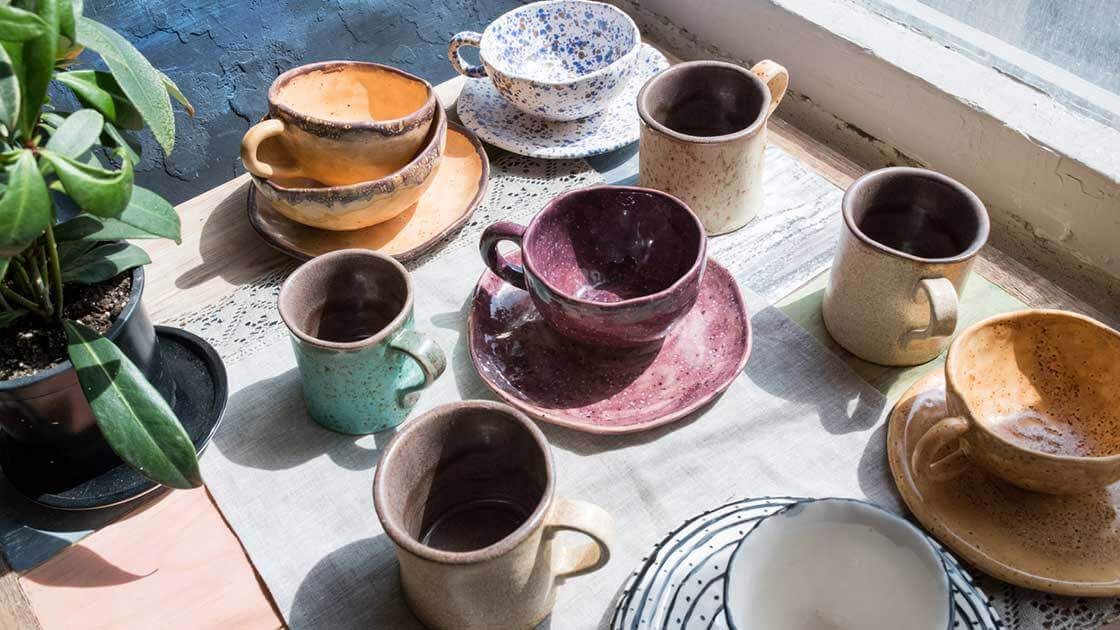
Importing ceramics is a task that importers perform in a variety of industries. Ceramics come in many forms and can be used for many different purposes. While it's excellent that ceramic goods come in a variety of shapes and sizes, importing them is difficult for these exact reasons.
Ceramics can be regulated by the Food and Drug Administration (FDA), the Environmental Protection Agency (EPA), and a number of other federal agencies depending on what it’s used for. Proper documentation and ensuring correct packaging for fragile goods are essential when importing ceramics to the U.S.
Our guide will make importing ceramics easy by explaining the different types of ceramic goods and their regulations.

The countries you can import ceramics from are about as diverse as ceramics are. For ceramic artwork, you can import from just about any country in the world as long as it's not a country where the U.S. has imposed trade sanctions. That said, the following countries are well-known for their ceramic artwork:
There are also plenty of other countries where you can import different types of ceramic goods. For example, the top five countries the U.S. imported ceramic tiles from are reflected in the table below.
| Country | Square Feet Of Tile |
| Spain | 495,564,193 |
| Italy | 388,225,617 |
| Mexico | 359,595,768 |
| Turkey | 300,873,685 |
| Brazil | 238,513,562 |
These are just ceramic tiles, but the data shows that ceramic goods in all varieties are available for import around the world.


Avoid Heavy Fines.
Our 45 Minute Licensed Expert Consulting Will Personally Guide You.
Ceramics are any solid objects made up of non-metallic compounds that are shaped and then heated to maintain their form. As we've established, there are a variety of different types of goods that are made from ceramics.
That said, the ceramic used to create these various goods can vary. Some of the most well-known ceramics are:
Each type of ceramic has characteristics that make them useful for certain types of goods. We’ll discuss the purposes ceramic goods can be used for below.

The first importing regulations you need to take care of are ensuring that you have the correct import documents prepared. These basic documents need to accompany any import, regardless of the type or quantity:
The details of these documents can be found in our documents needed for export and import. After retrieving them, fill out the information they ask for. Next, you must determine which specific ceramic goods each government agency regulates.
Ceramic goods can be divided into the three unique purposes that they’ll be used for:
Numerous federal agencies have jurisdiction over importing specific products into the country. Based upon what your ceramic products are used for will determine which federal agency regulations you will have to follow.
The CBP is a federal organization that enforces general regulations for all types of imports that come into the country. If the ceramic goods that you're importing into the U.S are works of art, then their regulations will be the ones you will need to follow.
For imported works of ceramic art, you will first need to determine if your art import is for commercial or personal use. Commercial-use ceramic artwork will need to be accompanied by a completed 7523 CBP Form. An ACE Manifest will also be required if your ceramic painting is necessary. Personal use imports of ceramic artwork will only need an oral declaration that should be submitted to the port of entry.
These basic requirements are the only ones that CBP will require you to follow when importing ceramic art. However, our article on importing art can help you with other facets of importing ceramics that you might not know about.
The Food and Drug Administration (FDA) will be the agency whose regulations you must abide by if you want to import ceramic foodware. FDA regulations are outlined in Title 29 of the Code of Federal Regulations (CFR). Since your ceramic import will be making contact with food, it's essential to the FDA that none of the materials within the ceramic foodware is dangerous.
One thing you will need to look out for when importing ceramic tableware into the U.S. is lead. Unfortunately, ceramic goods have been known to have lead in them. Lead from the ceramic plate or cup can contaminate the food or liquid it comes into contact with. Another substance that can be found in ceramic tableware that poses a threat to the safety of food is cadmium.
With these regulations in mind, ensure that your ceramic tableware does not contain the allotted amounts of lead and cadmium.
Ceramics goods can also include building materials. These can include goods like bricks, blocks and tiles. The Environmental Protection Agency (EPA) enforces regulations for building materials in the United States.
When it comes to ceramic building products, the EPA doesn't have too many regulations that they enforce. The agency does regulate air emissions caused by the manufacture of ceramic goods. Still, these regulations won't apply to ceramic goods that have already been made and are imported from another country.
The only regulations the EPA enforces that you will need to worry about are from the Toxic Substances Control Act or TSCA. This Act regulates chemical substances within objects, among other things. Fortunately, ceramic building materials usually don't contain toxic substances regulated by the TSCA. Nonetheless, you should familiarize yourself with TSCA regulations and make sure your ceramic doesn't have substances that could cause the EPA to prohibit your import.


Use Our HTS Look Up Tool To Find What You're Looking For.
Once you've followed the applicable government regulations for your ceramic import, you'll need to take care of customs duties for them. Like with matching the proper federal agency regulations to your ceramic import, you will need to apply the correct Harmonized Tariff Schedule of the U.S (HTSUS) code to your ceramic goods as well. Our articles on HTS codes with FDA flags will be able to provide you with helpful information about these codes if you have no experience using them.
Chapter 97 of the HTSUS is where you will find all HTS codes for artwork. All artwork covered by chapter 97 is duty-free. However, the U.S. government is picky about what they view as ceramic artwork. Under the HTS codes for chapter 97, particular ceramic objects are not considered artwork, such as:
Even if goods like these have artistic characteristics, they won't be given the duty-free clearance afforded by chapter 97. That said, heading 9703 does state that sculptures made of any material will be duty-free. That means if you have a sculpture made from ceramic, you will be able to take advantage of the duty-free treatment.
Chapter 69 of the HTSUS is where you will find the HTS Codes for all other types of ceramic products. Some of the ceramic goods that are covered in chapter 69 include the following:
Most ceramic goods listed in chapter 69 also have duty-free status. Even ceramic goods that have a duty rate might be free if you import them from a country where the U.S. has a free trade agreement. Therefore, always check the “special” column when examining the HTS code of your ceramic product for this indicator.
Some of the countries that the U.S. has free trade agreements with that will allow you to import a variety of ceramic goods include:
Whether your ceramic import is duty-free by default or thanks to a free trade agreement, there's a good chance you won’t to have to pay import duty. However, just because ceramic goods are duty-free under numerous circumstances doesn't mean you should be careless during this part of the importing process.
You will still need to list the HTS code for your import and claim preferential treatment for it. If not, the standard duty rate will be applied and you will have to pay the rate. Not listing the HTS code or listing the wrong one can cause you to incur some other severe penalties.
Another factor that importers of ceramics should consider are anti dumping and countervailing duties (AD/CVD) on imports of ceramic tiles. Dumping is when foreign producers sell products in the U.S. for much less than the sales price of domestic producers. The purpose of AD/CVD is to offset the lower price of these foreign products.
Producers in China have been extremely guilty of this, resulting in antidumping duties being levied against numerous porcelain and ceramic tile products, costing U.S. importers hundreds of dollars in added fees.
It’s important that you familiarize yourself with AD/CVD regulations and pay close attention to how much the ceramics you want to import cost. Obtaining the assistance of a CBP-licensed customs broker is the best way to avoid these duties outright and avoid unnecessary fines and penalties.

Worried about the Strict Regulations? Ask Our Experts.
Our 45 Minute Licensed Expert Consulting Will Personally Guide You.
Why face the challenges of importing ceramics alone when you can meet them with the help of a Licensed Customs Broker instead? At USA Customs Clearance, our team of licensed brokers can give you all the advice and help you need during a consulting session. Bring your questions on any matter and our expert customs brokers will assist you.
If your shipment of ceramic imports has a value of $2,500 or more, you will need a customs bond. We have you covered in that department with our affordable customs bond. This bond is continuous, which means you will be covered for any number of imports for an entire year. Contact USA Customs Clearance so we can help you with all of your ceramic importing needs.
 Copy URL to Clipboard
Copy URL to Clipboard
sir what is the difference in import custom duty on ceramic tableware items from India and china after the additional tariff of 10% that has become effective from 4th of feb 2025
I want to import ceramics- dinnerware.